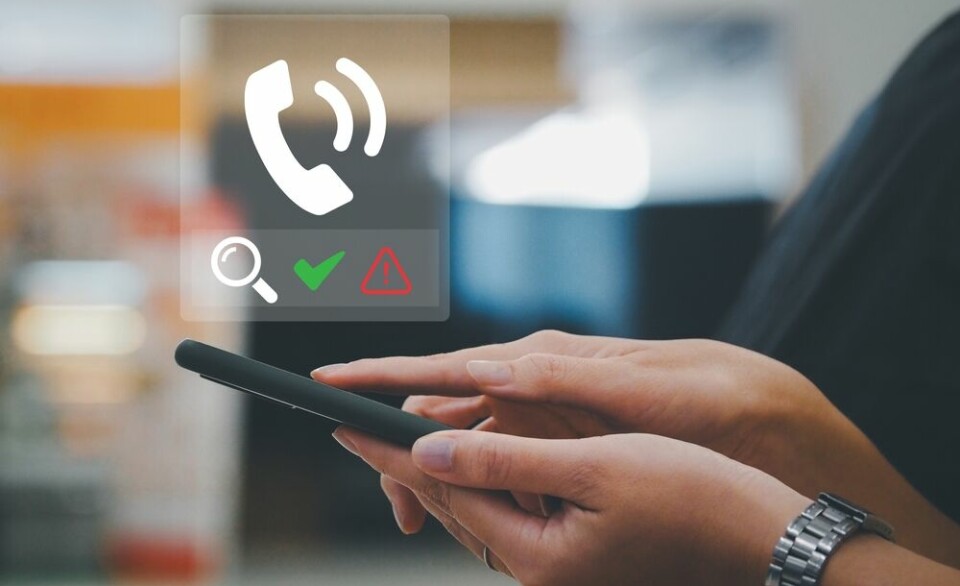-
Cars and driving: What's new in France in 2026
Including the new pollution tax on used cars, motorway toll changes and speed camera changes
-
More than a quarter of new car registrations in France are electric
EV sales hit new record in November 2025
-
Ryanair’s presence confirmed at Tours-Val de Loire airport
Bookings for summer flights to Marseille and Morocco are already open
How to avoid taxes and fees being levied on gifts sent UK to France
Many problems are reported this year with incorrect fees and taxes on gifts coming from outside the EU – we look at ways to minimise errors

People sending parcels from the UK and other non-EU countries to France must now take particular care to fill in customs forms correctly to avoid problems with delivery.
A key point, notably for those sending gifts to France, is to ensure that they complete the correct forms to indicate the nature of the parcel but The Connexion has also identified a potential issue regarding the kind of forms being used.
Problems with unexpected taxes and fees on parcels from abroad, especially the UK, continue to be reported and while some reports suggest that errors are sometimes made by postal staff in France, it is vital that senders carry out the correct formalities on their side.
The French Douanes (customs) service says problems have escalated in the second half of this year linked to a combination of factors. These are notably the end of a VAT exemption for low-valued items (under €20) from outside the EU, meaning everything now has to go through more sorting at the border, plus Brexit, which means one of France’s largest and nearest neighbours is now concerned by the non-EU rules.
Read more: ‘Customs’ charges on gifts received in France due to postal errors, say French Douanes
What forms need to be used?
The customs forms for sending items between the EU and non-EU countries are standardised around the world, and the main form is the CN23.
This form allows for a full description of the item, its value and full sender’s and recipient’s details.
In the UK, Royal Mail states that this must be used if sending parcels worth more than £270, whereas a simplified version can be used as an option for lower-value items, called CN22.
Gifts posted from the UK with a declared value of less than €45 (this should be a realistic valuation as blatantly improbable values can be questioned by the Douanes if they inspect the parcel), should not attract any import VAT or customs duties.
Nor should La Poste charge extra fees (frais de gestion) for delivering them, which may be levied related to carrying out customs formalities and advancing tax for the recipient where relevant.
Key points to remember
The most important point is to always use a customs form when sending parcels to France, to declare a gift as a gift, and include the value and weight. More on customs forms and sending from the UK is available at this link.
You should also describe the contents, giving as much detail as possible.
One reader, Sue Hailwood, has emailed to report receiving two low-value gift parcels with nothing to pay after having had to pay for two others a few weeks ago. “This time the 'gift' box on the customs label had been ticked by the sender and their value was under €45,” she said.
Having said this, we have heard from another reader who has had to contest VAT and frais de gestion charged on an item despite it being correctly marked as a £20 gift, so it appears the problem has not been resolved in all cases on the French side.
Another, Chris Brown, reports being inexplicably charged €37.80 for a delivery of socks labelled as a gift worth £20, which he said he refused. We have asked La Poste if the sender can be billed if a parcel is refused.
Declaring the recipient's details
We note that La Poste recently advised The Connexion that senders from outside the EU should complete full recipient details, including email, so La Poste can contact the recipient quickly in case of any tax and fees to be paid, as the frais de gestion are reduced if they pay in advance online rather than being asked to pay on receipt.
However, there is no space to enter this on the simplified CN22; we therefore suggest taking the option instead of using the CN23 for items over €45 where some level of tax and fees would be usual (dependent on value and whether or not customs duties may apply because the item is not shown to be made in the UK or EU).
We further note that the Douanes services states on its website regarding posting parcels in the other direction (France to non-EU countries): ‘NOTE: As it is the only postal document recognised by the [French] tax services, the use of a CN23 is recommended instead of and in place of a CN22’.
Royal Mail confirmed to us that using the CN23 is an option for parcels of all values, though it does not advise against use of the CN22. It confirmed also that its specialised Parcelforce parcels service (separate from ordinary Royal Mail post) only uses the CN23 “due to the nature of the operation, which primarily delivers larger, higher-value items, and the logistics involved”.
French parcel post involves several forms
In France when printing off labels at home with the standard parcel service, Colissimo, the CN23 is always generated, in four copies (one for you to keep), plus a ‘pro-forma invoice’ (showing sender and recipient’s details plus the declared value of the item) for the item (the same applies if using machines at post offices). In France all parcels must be sent from a post office for sending to the UK (as opposed to eg. posting it yourself in a postbox), and several copies of the CN23 plus the invoice are attached with a plastic pouch.
The website of the large commercial delivery service DHL in the UK statesthat you always need to include an invoice with parcels sent from the UK to destinations outside the UK to help customs officials in the other country. Despite the name, a ‘pro-forma invoice’ is a document used for non-commercial purposes (a commercial invoice is needed for commercial parcels).
However sources at Royal Mail said Royal Mail’s requirement is only for the CN22 or CN23 and did not confirm that multiple copies or an invoice are required on its side.
Royal Mail has several options for parcel post
Royal Mail recommends use of a specific page on its website which “will allow you to buy and print compliant address and customs labels”, according to the site.
There are several options for sending from the UK by Royal Mail, including having the parcel collected, dropping it in a postbox or specialised parcel postbox, taking it to a post office or a Royal Mail delivery office.
Note that parcels should have a barcode on their labels and both Royal Mail and Parcelforce products contain one (as French Colissimo labels do when sending to the UK). Electronic data is a mandatory requirement and is captured via their shipping solutions at the time the CN22/23 form is generated.
In certain cases, Royal Mail says alternative forms to the standard CN22 or CN23 are used, including:
- CN22B, available in Post Office branches, if sending with Royal Mail International Economy and International Standard
- CN22A, available in-branch or to complete online or download, if sending Royal Mail International Tracking and Signature services.
Related articles
High tax and customs fees on gifts sent to France from outside the EU
Post-Brexit tax recap: How to send gifts between the UK and France
























